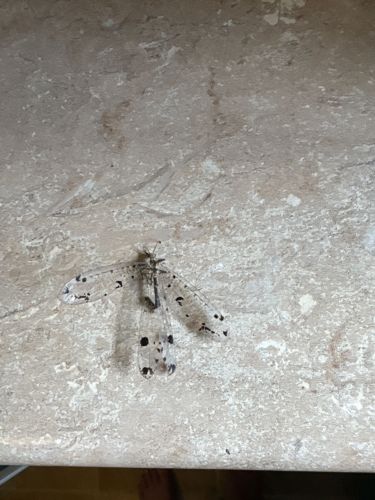Owlfly
Scientific Name: Ascalaphidae (family)
Order & Family: Order: Neuroptera, Family: Ascalaphidae
Size: Adults typically have a wingspan ranging from 4 cm to 10 cm (1.5 to 4 inches), with body lengths varying from 2 cm to 5 cm (0.8 to 2 inches). Larvae range from a few millimeters to about 2 cm.

Natural Habitat
Owlflies are found in a variety of habitats, including forests, woodlands, grasslands, and sandy areas, particularly where there is loose soil for their larvae to construct pits. They are often found near vegetation where adult prey insects are abundant.
Diet & Feeding
Adult owlflies are predatory, feeding on small flying insects such as moths, gnats, and other soft-bodied insects. Larvae are also predatory, primarily feeding on ants and other small ground-dwelling arthropods that fall into their pits.
Behavior Patterns
Adult owlflies are generally nocturnal or crepuscular, often resting during the day. They are agile fliers and typically hunt other insects in the air. Larvae are ambush predators, digging pits in loose soil or debris to trap unsuspecting prey, similar to antlions. The larvae are often referred to as 'doodlebugs' due to the winding trails they leave in sand.
Risks & Benefits
Owlflies pose no known risks to humans. As predators of other insects, both as adults and larvae, they contribute to natural pest control in ecosystems.
Identified on: 8/18/2025